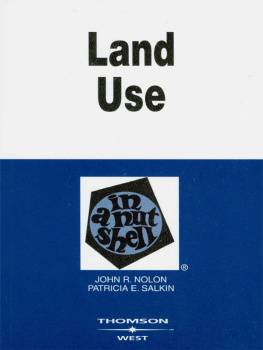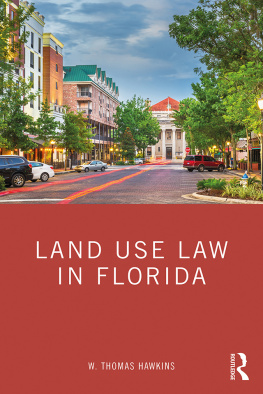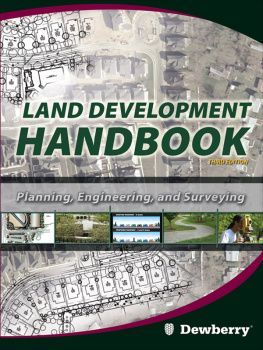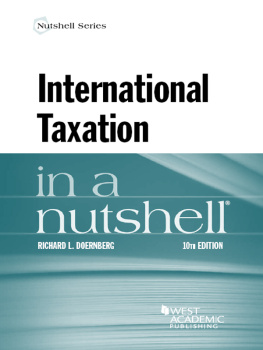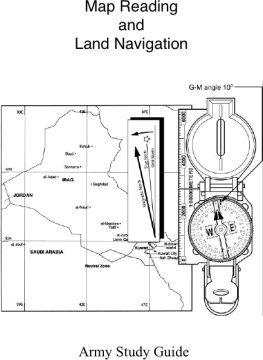Landmarks
Page list

WESTS LAW SCHOOL
ADVISORY BOARD
_________
JESSE H. CHOPER
Professor of Law,
University of California, Berkeley
DAVID P. CURRIE
Professor of Law, University of Chicago
YALE KAMISAR
Professor of Law, University of San Diego
Professor of Law, University of Michigan
MARY KAY KANE
Chancellor, Dean and Distinguished Professor of Law,
University of California,
Hastings College of the Law
LARRY D. KRAMER
Dean and Professor of Law, Stanford Law School
WAYNE R. LaFAVE
Professor of Law, University of Illinois
JONATHAN R. MACEY
Professor of Law, Yale Law School
ARTHUR R. MILLER
Professor of Law, Harvard University
GRANT S. NELSON
Professor of Law, University of California, Los Angeles
JAMES J. WHITE
Professor of Law, University of Michigan
I
LAND USE
IN A NUTSHELL
By
JOHN R. NOLON
Professor and Counsel to
the Land Use Law Center,
Pace University School of Law
PATRICIA E. SALKIN
Associate Dean and Professor of Law

Mat #40419912
II
Thomson/West have created this publication to provide you with accurate and authoritative information concerning the subject matter covered. However, this publication was not necessarily prepared by persons licensed to practice law in a particular jurisdiction. Thomson/West are not engaged in rendering legal or other professional advice, and this publication is not a substitute for the advice of an attorney. If you require legal or other expert advice, you should seek the services of a competent attorney or other professional.
Nutshell Series, In a Nutshell , the Nutshell Logo and West Group are trademarks registered in the U.S. Patent and Trademark Office.
2006 Thomson/West
610 Opperman Drive
P.O. Box 64526
St. Paul, MN 551640526
18003289352
Printed in the United States of America
ISBN13: 9780314163714
ISBN10: 0314163719

III
To those who preceded us: Robert R. Wright and Morton Gitelman.
To those who assisted us: our research assistants Jeffrey Barringer, Michael Donohue, Andrew Leffler, Ann Matthews, and Allyson Phillips.
To those in whose hands this critical body of law is placed: the students and teachers of Land Use Law.
*
V
FOREWORD
_________
Land Use in a Nutshell
Land. We use it. We own it. We grow things on it. We extract things from it. We build on it. We sell it. We leave it to our heirs. It sounds simple, doesnt it? Most Americans rarely think about our history of property rights, its evolution and its complexities. Many have strong emotional attachments to land while many others take a detached, utilitarian view.
We also abuse land and, in so doing, create problems for other individuals, society and future generations. Many profit handsomely from land, often due to the actions of both others and the public. Some may generously give back some of those profits to charities while others are just as generous in their political contributions. Land, of course, is deeply embedded in our culture, our politics and our economy. Occasionally, losses in value occur and, if those losses can even be partially traced back to public actions, compensation may be demanded by those with a certain ideological outlook.
Perhaps our property rights system isnt so simple, after all.
Just one story can suggest some of the complex and confusing relationships among individuals, our collective society, our rules and our values.
VI
A very simple problem arises because of the sheer numbers of people involved when we reach the level of a city or town. Who represents all the different factions? Actions taken by property owners affect more than their immediate neighbors for instance, a high-rise apartment building in a neighborhood will affect an entire neighborhood by increasing traffic. If the building does not include parking, it will also add to a scarcity of parking. It might block one neighbors views, while run-off from impervious surfaces will pollute a nearby stream. Private negotiations will involve representatives from the neighbors whose views are ruined, from those whose houses fall in the shadow of the building, from those concerned about stream quality, and from those concerned about traffic. The time and money involved in all these negotiations will greatly add to development costs. (Lee Farmer, University of Pennsylvania, 2004)
Every reader of this book will be able to tell their own stories. Students in every law school and planning school class will share stories, dissect them, and apply the law. From this clinical approachthe anatomy of a communitythe next generations understanding of our system will evolve as it has for over one thousand years. Arguably the best system ever created, it is one that balances interestsamong private parties, among private and public interests and among generations. Building communities of lasting value has never been easy.
VII
For the first time in history, a majority of our worlds population now lives in urban areas. Expected population increases in excess of two billion over the next thirty years will require construction of the equivalent of both a Chicago and a Los Angeles each month. The urbanization of poverty, too, is increasing and the number of people living in slums is also increasing. Worldwide, land is a source of life and a source of conflict. We cannot divorce our use of land and other resources in the United States from the need to use the worlds resources of land, air and water more wisely. Being a steward of our globe is tougher than it may sound. Yet we leave a legacy whether its intentional or not.
Land Use in a Nutshell has been an important book for several decades and Professors Salkin and Nolon have provided a service in producing a new product, placing our law in 2006 firmly in the context of both its thousand year history and the political cross-currents and legal debates of this millennium. Land Use in a Nutshell is not a stand-alone book but rather an invaluable companion to the casebooks, articles and ongoing discussions in the United States and throughout the world about this thing called land.
W. PAUL FARMER, FAICP
EXECUTIVE DIRECTOR AND CEO,
AMERICAN PLANNING ASSOCIATION
*
IX
PREFACE
_________
This summary and exploration of land use law is written with great respect for the relevance, breadth, and complexity of the subject matter. There are nearly a dozen law school casebooks on land use law; they contain over 10,000 pages of cases, commentaries, notes, and problems. Predictablywith such a vast and important subjectthe content of these books is intricately varied and diverse. In a nutshell, writing briefly and simply about this mystifying subject is a challenge.
Robert R. Wright wrote the original volume of Land Use in a Nutshell and was assisted in its fourth edition by our friend Morton Gitelman. It has served students, professors, and interested professionals for over a quarter of a century. We considered various approaches to Wests invitation to write a new version in response to the rapid changes on the land and in the law. To help us navigate this extensive terrain, we reviewed every case contained in current casebooks and let that material dictate the content and organization of this book. We reckoned that a Nutshells principal users are students, and that they will consult the book primarily to find out where each case fits into the grand tapestry of land use law. This caused us to abandon the framework of our own casebook, one that we inherited from Professors Wright and Gitelman.

